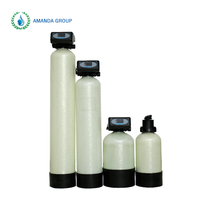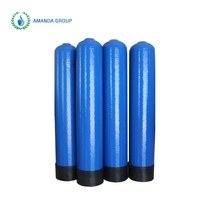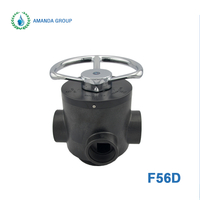1. Need to clarify the TDS, can not represent the good or bad water quality.
TDS is the total amount of dissolved solids in water, that is, the total amount of anions and cations in water. Mainly on behalf of the amount of mineral ions in the water. Mainly: calcium, magnesium, potassium, sodium, zinc, iron and other beneficial minerals, and harmful: lead, mercury, cadmium, chromium, arsenic, the five major categories in the tap water factory standards are generally far below 0.05mg / L, while the TDS pen show are more than 1mg / L, that is to say, the TDS is low can not indicate whether the heavy metals are exceeded.
Bacteria, viruses and other microorganisms, as well as sediment, rust, colloids and other harmful insoluble pollutants, TDS can not be detected. Therefore, the level of TDS does not represent the quality of water.
2. Water electrolysis produces discoloration, is a chemical reaction, not a method of testing water quality.
Tap water, mineral water why discoloration, because tap water, mineral water contains calcium, magnesium and other minerals. After electrolysis, it is electrically conductive, so that the iron particles above the iron bar melted into the water, so the water changes color. Pure water, because there are no minerals, so do not conduct electricity, so do not electrolysis, so there is no discoloration. After adding salt, because salt also contains minerals, it is conductive, so the salt water is also discolored.
Tap water contains calcium, magnesium and other ions are electrolytes, detecting the iron bar into the tap water, iron is dissolved in water by electrolysis, the formation of divalent iron ions (bivalent iron ions).
Formation of divalent iron ions (yellowish green), iron hydroxide (gray), iron trioxide (reddish brown), iron tetraoxide (black);
Pure water, which is generally used as a control group, does not change color because it does not contain calcium and magnesium ions and does not undergo electrolytic reactions.
Water contains a variety of dissolved minerals and organic substances, electrolysis process, the current acts on the ions in the water, making the minerals in the water chemical reactions, these reactions may lead to changes in color.
The electrolysis water test is not a nationally recognized method of testing water quality, but is simply a chemical reaction. There is no simple instrument that can detect the water quality is good or bad, only through the authority of the third-party water quality testing organizations to test.
In fact, in addition to pure water electrolysis does not change color, tap water, mineral water and other drinking water, electrolysis will change color. Electrolysis discoloration to determine the quality of water is not scientific, please do not be misled by this lie.
3. Electrolysis measurement of water quality yellow and green, does not indicate that the chlorine ion has not been removed.
For residual chlorine, the authoritative definition is: chlorine in the water, after a certain period of time to lift, the remaining free chlorine in the water and the combined chlorine of the general term. Chlorine into the water, in addition to bacteria, microorganisms, organic matter, inorganic matter in the water, such as the role of a small part of the amount of chlorine, there is still a part of the amount of chlorine left, this part of the amount of chlorine is called residual chlorine.
Why is there residual chlorine in water? Tap water should be a sanitary and safe drinking water, but due to environmental pollution, resulting in a large number of bacteria and other harmful substances in the water, in order to inhibit and kill bacteria in the water, China's tap water in the treatment of water through the process of chlorine to realize the way of sterilization and bacteriological inhibition. At the same time, because the tap water from the factory to finally enter the family water terminal, but also after a long stay in the pipeline, in the process of water transmission, and will inevitably have the breeding of bacteria and viruses, so the water must maintain a certain residual chlorine content, in order to inhibit the growth of microorganisms.
Reasonable content of residual chlorine
The standard of residual chlorine content in China is: the free residual chlorine of factory water should not be less than 0.3mg/L after contacting for 30min, and should not be less than 0.05mg/L at the end of the pipeline network, that is to say, if we don't purify the tap water, the drinking water we drink every day will contain up to 0.05MG/L of residual chlorine.
Removal of residual chlorine
In order to prevent the growth of bacteria in water, water treatment is often thrown into the water biocides, the most commonly used is chlorine, and to maintain a certain amount of excess, which is the residual chlorine, residual chlorine can be divided into free residual atmosphere and chemical residual chlorine two kinds of residual chlorine, which is referred to as the free residual chlorine.
Removal of residual chlorine in the water there are two methods, one is to add certain chemicals to the water, such as NaHSO3, the second is to let the water through the granular shell activated carbon filter. Both methods are currently in use.
Principle of dechlorination
At present, it is generally believed that the dechlorination process is adsorption, catalytic and chlorine and carbon reaction of a comprehensive process. Adsorption is the same as activated carbon adsorption of organic matter in water, except that the adsorbent molecules are smaller than the organic matter molecules. Chlorine and charcoal reaction means that the residual chlorine exists in the form of hypochlorous acid in water, which undergoes a chemical reaction on the surface of the charcoal, and the activated charcoal acts as a reducing agent to reduce the hypochlorous acid to chlorine ions:
Cl2+HO→HOCI+HCI
Under acidic or neutral conditions, the residual chlorine mainly exists in the form of HOCI. HOCl will oxidize the activated carbon when it meets the activated carbon, and generate oxides (or CO, C02) on the surface of the shell activated carbon, and the HOCl will be reduced to h+ and cl-. After the water passes through the activated carbon filter bed, the residual chlorine in the water can be completely removed, and the residual chlorine in the water after filtration can be close to zero.
Selection of products for removing residual chlorine in water
The activated carbon for removing residual chlorine in water can be used as granular activated carbon or powdered activated carbon, but at present, granular activated carbon is still used for filtration treatment, and the flow rate of the granular activated carbon filtration bed for removing residual chlorine in water can be designed to be 20m/h, which is mainly due to the quicker removal of residual chlorine by activated carbon.
Regarding the selection of activated carbon for removing residual chlorine, its physical properties are the same as the selection of activated carbon for adsorbing organic matter, and there are three methods for selecting its adsorption performance:
The first method is to select according to the general adsorption performance indexes such as specific surface area of activated carbon, iodine value, carbon tetrachloride adsorption value, etc. This is mainly because the chlorine molecules adsorbed by the activated carbon are small, and the molecular size of the iodine is similar, which can enter into the micropores of the activated carbon to give full play to the adsorption effect of all the surfaces of the activated carbon involved in the adsorption. Therefore, selecting activated carbon with high specific surface area and iodine value, the adsorption performance of residual oxygen is also good.
The second method is to determine the adsorption isotherm of the residual chlorine by activated carbon and select the activated carbon with high adsorption capacity. The adsorption isotherm is determined in the same way as the adsorption isotherm of organic matter in water by activated carbon.
The third method is to determine the half dechlorination value of activated carbon to remove residual chlorine in water, the so-called half dechlorination value refers to the residual oxygen-containing water through an activated carbon adsorption column, to determine when the residual chlorine concentration in the effluent water is just equal to the residual oxygen concentration of the influent water half of the height of the charcoal layer (cm), that is, for the half dechlorination value. According to the regulations, activated carbon with a half dechlorination value of less than 6cm is more effective when used for dechlorination.
Factors affecting the removal of residual chlorine
(1)Activated carbon particle size
Although the smaller particle size has little effect on the specific surface area of activated carbon (about 0.02%), the smaller particle size opens up more internal pores to the liquid phase and facilitates the adsorption and reaction of residual chlorine. The smaller the activated carbon particles, the faster the removal of residual chlorine, the better the effect. Therefore, the activated carbon particles for removing residual chlorine in industry should be chosen as small as possible.
(2) pH
Because water pH affects the form of residual chlorine in water, it also affects the effect of activated carbon to remove residual chlorine. Residual chlorine in water mainly
refers to Cl2, HOCl, OCl-, the ratio of the three to each other with the change of pH changes, activated carbon on the molecular state of HOCl removal speed than the ionic state of OCI-, to be faster, so the low pH on the activated carbon to remove residual chlorine in water is favorable.
(3)Temperature
Increased temperature is favorable to the dechlorination of activated carbon, this law is different from the physical adsorption law of activated carbon, which also indicates that the dechlorination process of activated carbon can not be regarded as a purely physical adsorption process.
(4) The effect of water turbidity
High water turbidity may block part of the pores of activated carbon, thus hindering the diffusion of residual chlorine molecules to the active surface, thus reducing the dechlorination speed.



